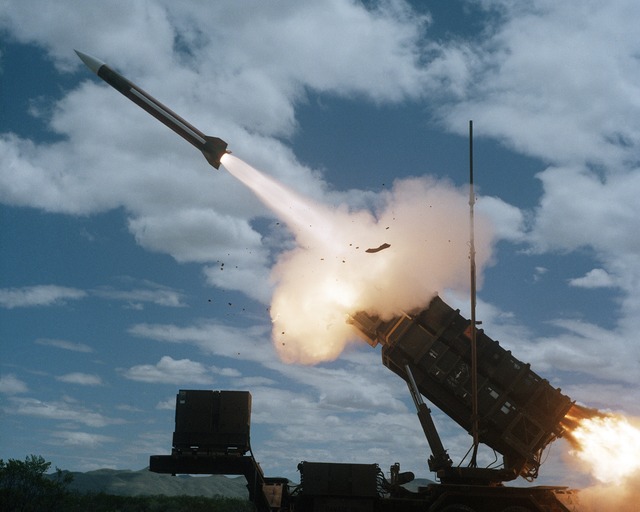
As global governments look to decrease emissions and achieve Net zero to meet the 1.5C global warming target set at COP26 last year, one of the most prolific polluting sectors has been largely excluded from the conversation.
Effective climate action requires world leaders to reckon with brutal truths in order to reach this goal, and frank conversations about military emissions are still exempt from many countries’ climate crisis strategies and legislation.
The US Department of Defense is the single largest consumer of fossil fuels globally and the most prominent institutional emitter. To put this into perspective, according to reports, if the US military were a country, its fuel usage alone would place it between Peru and Portugal as the 47th largest global emitter of greenhouse gasses, making it a more significant polluter than many of the countries in attendance at the COP26 summit in Glasgow. In 2020, global military expenditure reached nearly $2 trillion, yet the military’s enormous carbon bootprint was still not officially on the agenda for COP26. Scientists and climate campaigners hope that by COP27, the military will finally be forced to reckon with its impact on the climate crisis.

The US military is not the only culprit. The Ministry of Defence (MoD) says the UK military’s total annual carbon footprint is 3 million tonnes of carbon dioxide equivalent (CO2e). However, researchers believe the true figure to be much higher, at 11 million tonnes.
In fact, Scientists for Global Responsibility (SGR) estimate that together, the world’s militaries and associated industries account for 6% of global emissions, higher than shipping and civilian aviation combined.
How did we get here?
It’s clear that the global military industrial complex is not only unsustainable, but one of the biggest threats to climate crisis mitigation. Moreover, governments have shown that they are capable of introducing ambitious legislation in other sectors, such as the UK government’s pledge to ban petrol and diesel cars by 2030. So why is the Defense sector often exempt from similar green initiatives and legislation?
The US has a long history of taking steps to cover up the true carbon footprint or “carbon bootprint” (a phrase coined by Dr. Stuart Parkinson of SGR) of world militaries. In 1997 during the development of the Kyoto Treaty, the US negotiating team won a blanket military exemption as part of the climate accords. Following this, the 2015 Paris Agreement now obliges 46 countries and the European Union to submit annual reports on their national emissions under the United Nations Framework Convention on Climate Change (UNFCCC). Whilst the world is finally waking up to the vast issue of military emissions, the cloud of the Kyoto Treaty’s military exemption still hangs overhead. Although the Paris Agreement removed the military exemption, military emissions reporting is still voluntary, and it often falls to researchers and NGOs to calculate the actual emissions figures. According to MilitaryEmissions.org – a collaborative effort between the Conflict and Environment Observatory (CEOBS) and Concrete Impacts – underreporting is rife, and data is often hidden within non-military sources to hide the truth about military emissions. For example, Canada avoids showing the true impact of its military by reporting military flights under general transport.
That being said, the issue of the global military carbon bootprint has not gone unchallenged. In response to mounting criticism, the Defense Sector has tried to deflect scrutiny of its unfettered emissions and justify its increasing budgets by focusing on how the climate crisis will affect geo-strategic relations, giving rise to issues such as climate migration, equipment failure and conflicts caused by desertification and rising sea levels.

In a recent report, the Pentagon announced that “increasing temperatures; changing precipitation patterns; and more frequent, intense, and unpredictable extreme weather conditions caused by climate change are exacerbating existing risks” for US security.
At COP26, when questioned about the military’s contribution to climate change, US delegates, including Speaker Nancy Pelosi, avoided accountability and claimed that increased military budgets were justified due to the security threats posed by the climate crisis, such as rising sea levels and climate refugees. There was no mention of the steps that the Pentagon would take to mitigate its contribution to climate devastation.
Sustainable solutions
There are early indications that the Defense Sector is under enough pressure to begin attempting to take steps in the right direction. For example, with the UK being legally bound to reach Net Zero by 2050, the MoD has pledged to contribute to these efforts. However, this pressure must be maintained to achieve real, lasting changes.
In June 2021, Nato announced its intention to set targets for reducing emissions and providing transparent reporting on climate impact; however, this has yet to materialize into concrete actions.
Institutional change takes time, which is why it’s vital that governments act now by facing up to the problem and pledging emissions cuts. Policies that address emissions reductions whilst driving change will help combat military exceptionalism and plug the emissions gap.
In order to be credible, pledges should set clear emissions reductions targets, commit to robust and transparent reporting mechanisms, create targets for emissions reductions in the defence manufacturing and technology industries and plans to commit to utilising renewable energy sources. All of this should be underpinned by a long-term green strategy with annual reporting on performance. This addresses the issue of underreporting and brings the Defense Industry in line with sectors such as manufacturing and transport. However, in the long-term, greater leadership is needed from world governments to introduce cultural changes to the military industrial complex and to consider efforts to shrink global military activities and associated industries.

It begs the question: while humanity is buried deep in a global climate and ecological emergency with no end in sight, should world leaders be pumping even more finite resources and hard-earned cash into bolstering the arsenal of weapons of mass destruction? Especially when It is clear that the military is playing a role in accelerating the climate emergency.
Whilst humans are by no means the smartest species on the planet, Human civilization seems to be effective at finding ways to accelerate its overall demise. Ultimately, the lack of serious action to tackle military emissions is just one example of monumental and historic failed global leadership and governance alongside systemic short-termism that is failing to sustain life on earth for future generations.
Join Mailing List
